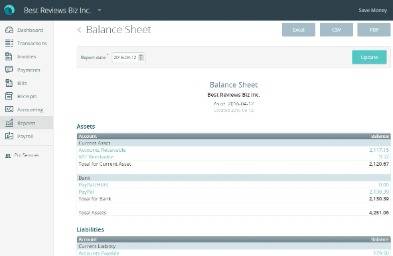Small Business Bookkeeping Basics
Accounting is the interpretation and presentation of that financial data, including aspects such as tax returns, auditing and analyzing performance. But by taking the time to fully understand the five main bookkeeping tasks, you can take control of your financial records and build a solid foundation for any future accounting activities. In the early days, you’ll be able to manage all of these without too much trouble. Someone who’s new to the profession, for example, may start their rates at $20 an hour, while someone with several years of experience may charge $35 an hour or more. Researching average bookkeeper salaries for your area can give you an idea of what your competitors may charge. If you’re just starting a bookkeeping business, it’s likely that you’ll just be working solo, at least for the beginning.
- As you grow your client roster, you’ll want to make sure you’re tracking them effectively and completely.
- You’ll need to provide your personal information, along with your business details, in order to open an account.
- Keep reading to learn more about QuickBooks Online, Xero, and five additional bookkeeping solutions tailor-made for small-business owners like you.
- For full-time bookkeepers, the average annual salary sits around $77,000, according to Glassdoor.
- Answer a few questions about your accounting software needs and we’ll send you up to five customized recommendations.
- Accounting software makes it easy to store these documents and reference them in case of an accounting error or audit.
Secure cloud storage – Cloud based software will securely store and back-up your data, so if you run into any issues onsite, you’ll have peace of mind that your information is safe and still accessible. If you stick to these three golden rules, you’ll slash the hours it takes to keep clean books, save yourself a lot of headaches, and keep the cash flowing. Make sure you establish an invoicing process that is efficient as possible.
How to do small business bookkeeping
“Founders are typically smart, and [handling my own bookkeeping] is what I would do too,” she says. Eversmann encourages business owners to follow IRS guidelines on tracking transactions and to save all receipts for seven years. Set a bookkeeping schedule, such as weekly or monthly, and stick to it. A bookkeeping or accounting software program or a hired bookkeeper can make this easier. The specific answer to this question can vary somewhat depending on the extent of bookkeeping services your company needs, and how often you require the services of a small business bookkeeper.
- Accounts receivable (AR) is the money your customers owe you for products or services they bought but have not yet paid for.
- QuickBooks even has a version for freelancers and self-employed individuals.
- We’ll show you examples of how to record a transaction as both a credit and debit later on.
- You may need to contact your secretary of state or department of revenue for more information on what paperwork you may need to complete to legally establish your bookkeeping business.
- To E-Commerce, advice on securing loans, and the ins and outs of starting your own food truck business.
- Many or all of the products featured here are from our partners who compensate us.
For larger businesses with more transactions, accrual accounting becomes necessary along with double-entry bookkeeping. A separate bank account is the first step in distinguishing between business and personal finances. Bookkeeping becomes more difficult when business transactions are lumped together with personal activity.
Outsourced bookkeeping jobs
When doing the bookkeeping, you’ll generally follow the following four steps to make sure that the books are up to date and accurate. Remember that each transaction is assigned to a specific account that is later posted to the general ledger. Posting debits and credits to the correct accounts makes reporting more accurate. Generally speaking, bookkeepers help collect bookkeeping for small business and organize data and may have certain certifications to do so for your business. On the other hand, accountants are generally equipped with an accounting degree and may even be state-certified CPAs. You can expect most bookkeepers to maintain the general ledger and accounts while the accountant is there to create and interpret more complex financial statements.
But to get the most out of Sage Business Cloud Accounting, you really need the $25-a-month plan. In contrast, the pricier plan includes more thorough reporting, unlimited users, and cash flow forecasting. Even though we generally prefer Xero to QuickBooks, QuickBooks Online remains the most popular accounting software for US-based accountants, bookkeepers, and auditing clerks. For instance, most virtual and outsourced bookkeeping services still use QuickBooks or proprietary in-house software—though some, like Bookkeeper360, also sync with Xero. Often, office management tasks like customer billing, paying vendors and payroll are considered to be bookkeeping tasks. Although accounts receivable, accounts payable and payroll do impact your books, some of these tasks can be managed by a person in your company other than your bookkeeper.














